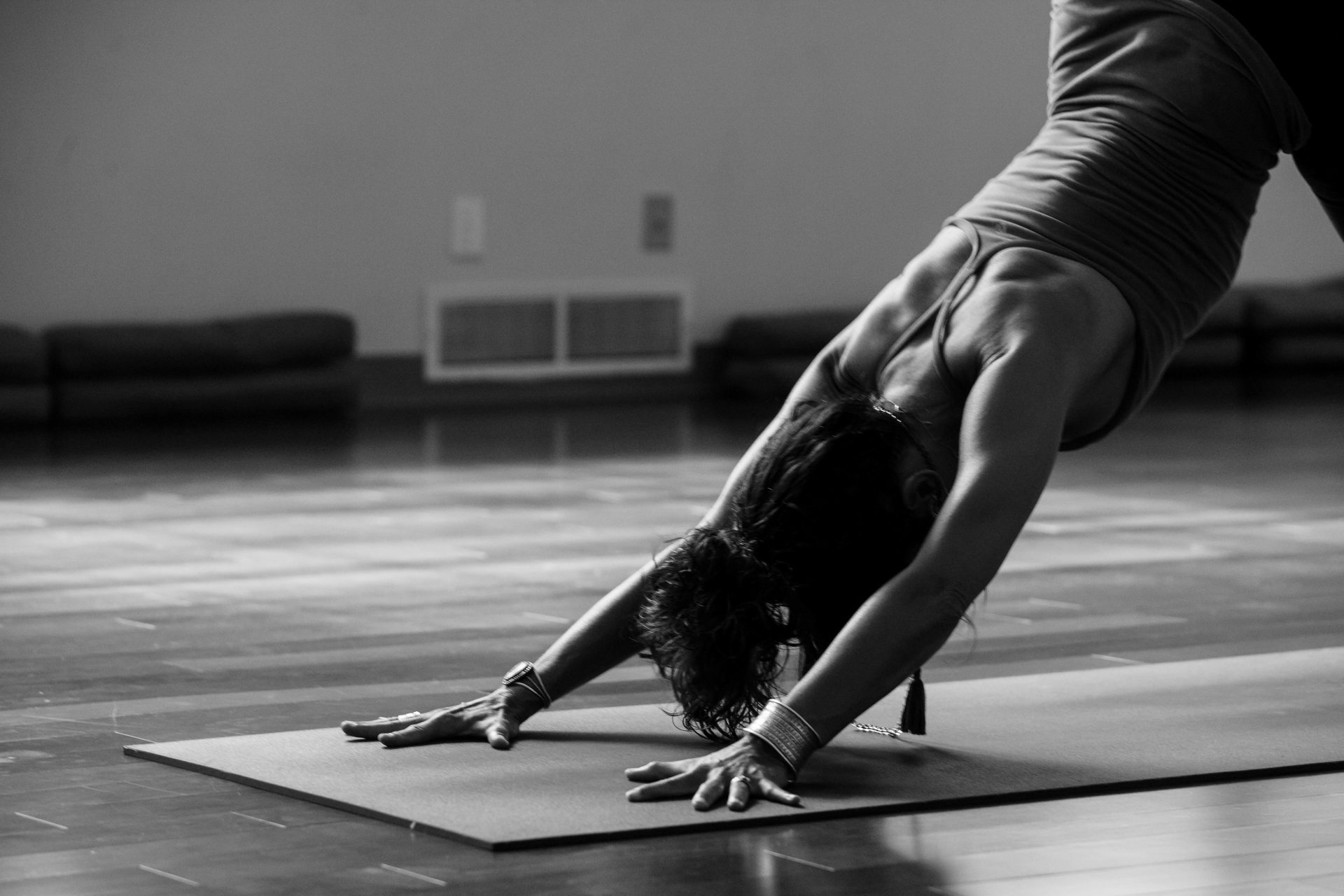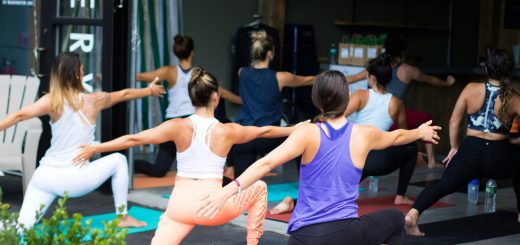Hatha Yoga: Physical Postures for Body and Mind Harmony

Hey there, amazing readers! 🖐️ Just a quick note: yes, we know there are a lot of ads here. Trust us, we get it—it’s not the prettiest look, but they help us keep this blog alive and kicking. Those pesky little ads cover the costs of all the behind-the-scenes magic, from hosting and tech stuff to creating content we hope you’ll love.
We’re committed to delivering quality posts, and your support (even just sticking around despite the ads) means everything to us. So, bear with us, and thanks for helping us keep the good vibes rolling. Now, on to the fun stuff! 😉
TRANSLATE BUTTON AT THE END OF THE ARTICLE
A Quick Overview
Hatha yoga is a traditional form of yoga that focuses on physical postures, breath control, and meditation to achieve harmony between the body and mind.
It is a popular practice that offers a myriad of benefits for overall well-being.
Understanding the physical postures, proper alignment, breath control, and incorporating meditation are key components of Hatha yoga.
Whether you’re a beginner or an advanced practitioner, Hatha yoga can be tailored to suit your needs and abilities.
Finding a qualified instructor is crucial to ensure you practice safely and effectively.
In this article, we will delve into the world of Hatha yoga, exploring its benefits, postures, techniques, and safety tips.
Introduction to Hatha Yoga
Hatha yoga originated in India and has been practiced for centuries as a way to achieve balance and harmony in the body and mind.
The word "Hatha" is derived from Sanskrit, meaning the union of the sun (ha) and the moon (tha), symbolizing the balance between opposing forces.
Unlike more fast-paced styles of yoga, Hatha yoga focuses on holding poses for longer periods, allowing practitioners to deepen their practice and awareness.
It is a gentle and slow-paced form of yoga that is suitable for all fitness levels.
Benefits of Practicing Hatha Yoga
The practice of Hatha yoga offers a wide range of benefits for both the body and mind.
Some of the key benefits include:
Improved flexibility and strength: Hatha yoga helps to increase flexibility and build strength in the muscles, leading to better posture and reduced risk of injury.
Stress relief: The combination of physical postures, breath control, and meditation in Hatha yoga can help reduce stress and promote relaxation.
Better focus and concentration: Practicing Hatha yoga can enhance mental clarity, focus, and concentration through mindful movement and breath awareness.
Increased energy levels: Regular practice of Hatha yoga can boost energy levels and improve overall vitality.
Enhanced mindfulness: Hatha yoga encourages present-moment awareness, fostering a deeper connection between the body and mind.
Understanding Physical Postures
Hatha yoga is primarily focused on physical postures, known as asanas, that are designed to stretch, strengthen, and balance the body.
Each posture targets specific muscle groups and promotes overall health and well-being.
Some common physical postures in Hatha yoga include:
Mountain pose (Tadasana): Standing tall with feet together, arms by the sides, and focusing on alignment and grounding.
Downward-facing dog (Adho Mukha Svanasana): A full-body stretch that lengthens the spine and strengthens the arms and legs.
Warrior I (Virabhadrasana I): A powerful pose that builds strength in the legs and core while opening the chest and shoulders.
Importance of Breath Control
Breath control, or pranayama, is an essential component of Hatha yoga that focuses on regulating the breath to calm the mind and energize the body.
Proper breathing techniques can enhance the benefits of physical postures and promote relaxation.
Some common breathing exercises in Hatha yoga include:
Ujjayi breath: A deep, oceanic breathing technique that creates a soothing sound and helps to focus the mind.
Kapalabhati breath: A forceful exhale followed by passive inhales that cleanse the respiratory system and invigorate the body.
Nadi Shodhana (alternate nostril breathing): A balancing breath technique that calms the nervous system and clears the mind.
Achieving Mind-Body Harmony
Hatha yoga aims to achieve harmony between the body and mind through the practice of physical postures, breath control, and meditation.
By cultivating mindfulness and awareness during yoga practice, practitioners can deepen their connection to themselves and find inner peace.
The holistic approach of Hatha yoga addresses physical, mental, and emotional well-being, creating a sense of balance and harmony in all aspects of life.
Common Hatha Yoga Poses
Some common Hatha yoga poses that are suitable for practitioners of all levels include:
Child’s pose (Balasana): A resting pose that stretches the back, hips, and thighs while promoting relaxation.
Cat-Cow stretch (Marjaryasana-Bitilasana): A gentle flow between arching and rounding the spine to increase flexibility and mobility.
Bridge pose (Setu Bandhasana): A backbend that strengthens the glutes, hamstrings, and lower back while opening the chest and shoulders.
Proper Alignment and Technique
Proper alignment and technique are crucial in Hatha yoga to prevent injury and maximize the benefits of each pose.
Some key alignment principles to keep in mind include:
Engage the core muscles to support the spine and protect the lower back.
Relax the shoulders away from the ears to avoid tension in the neck and upper back.
Keep the breath smooth and steady to maintain awareness and focus during practice.
Modifications for Beginners
For beginners, it is important to start slowly and gradually build strength and flexibility.
Some modifications for beginners in Hatha yoga include:
Using props such as blocks, straps, or blankets to support the body in challenging poses.
Taking breaks when needed and listening to your body to avoid pushing beyond your limits.
Focusing on proper alignment and technique rather than depth or intensity in the poses.
Advanced Variations and Sequences
For advanced practitioners, Hatha yoga offers a variety of challenging poses and sequences to deepen their practice.
Some advanced variations and sequences in Hatha yoga include:
Arm balances such as crow pose (Bakasana) and handstand (Adho Mukha Vrksasana) to build strength and balance.
Inversions like headstand (Sirsasana) and shoulder stand (Sarvangasana) to improve circulation and increase focus.
Dynamic flow sequences that combine breath and movement, such as Sun Salutations (Surya Namaskar) to create a moving meditation.
Incorporating Meditation and Relaxation
In addition to physical postures and breath control, Hatha yoga incorporates meditation and relaxation techniques to calm the mind and reduce stress.
Some ways to incorporate meditation and relaxation into your Hatha yoga practice include:
Practicing mindfulness by focusing on the present moment and observing thoughts without judgment.
Ending each practice with a guided relaxation or Savasana to integrate the benefits of the practice and promote deep relaxation.
Incorporating meditation techniques such as visualization, chanting, or mantra repetition to quiet the mind and cultivate inner peace.
Precautions and Safety Tips
When practicing Hatha yoga, it is important to practice safely and mindfully to prevent injury and ensure a positive experience.
Some precautions and safety tips to keep in mind include:
Listening to your body and respecting its limits to avoid pushing beyond your capabilities.
Communicating with your instructor about any injuries, medical conditions, or concerns before starting a practice.
Warm-up properly before starting a yoga practice to prepare the body for movement and prevent strain or injury.
Finding a Qualified Instructor
Finding a qualified and experienced instructor is essential when practicing Hatha yoga to receive proper guidance and instruction.
Some tips for finding a qualified instructor include:
Researching the instructor’s credentials, experience, and teaching style to ensure they are knowledgeable and reputable.
Attending a trial class or workshop to observe the instructor’s teaching methods and see if their approach resonates with you.
Seeking recommendations from friends, family, or online reviews to find a reputable instructor in your area.
Conclusion
Hatha yoga is a holistic practice that focuses on achieving harmony between the body and mind through physical postures, breath control, and meditation.
By incorporating proper alignment, breath control, and mindfulness into your practice, you can experience the myriad benefits of Hatha yoga, including improved flexibility, strength, focus, and relaxation.
Whether you’re a beginner or an advanced practitioner, Hatha yoga offers a customizable practice that can be tailored to suit your needs and abilities.
Remember to practice safely, listen to your body, and find a qualified instructor to guide you on your yoga journey.
Embrace the transformative power of Hatha yoga and cultivate balance and harmony in your life.

The Enlightenment Journey is a remarkable collection of writings authored by a distinguished group of experts in the fields of spirituality, new age, and esoteric knowledge.
This anthology features a diverse assembly of well-experienced authors who bring their profound insights and credible perspectives to the forefront.
Each contributor possesses a wealth of knowledge and wisdom, making them authorities in their respective domains.
Together, they offer readers a transformative journey into the realms of spiritual growth, self-discovery, and esoteric enlightenment.
The Enlightenment Journey is a testament to the collective expertise of these luminaries, providing readers with a rich tapestry of ideas and information to illuminate their spiritual path.
Our Diverse Expertise 🌟
While our primary focus is on spirituality and esotericism, we are equally passionate about exploring a wide range of other topics and niches 🌍📚. Our experienced team is dedicated to delivering high-quality, informative content across various subjects ✨.
To ensure we provide the most accurate and valuable insights, we collaborate with trusted experts in their respective domains 🧑🏫👩🏫. This allows us to offer well-rounded perspectives and knowledge to our readers.
Our blog originally focused on spirituality and metaphysics, but we’ve since expanded to cover a wide range of niches. Don’t worry—we continue to publish a lot of articles on spirituality! Frequently visit our blog to explore our diverse content and stay tuned for more insightful reads.





